From the careful analysis of Stephen King's novel (1977) and of the film counterpart by Stanley Kubrick (1980), readings emerge that we can define as "esoteric": the Overlook Hotel as a labyrinth / monster that swallows its occupants and as a space outside of time; the superimposition of the past with the present in a similar perspective to that of the so-called "Akashic memory"; the "shimmer" as a supernatural capacity to insert oneself into this flow outside of time and space; a conception of the United States of America as a single, huge Indian cemetery (and not only).
di Pier Vittorio Formichetti
The most annoying feature of this film is that it is very pleasant to watch, but almost impossible to analyze. It's like a daydream. I tried, unsuccessfully, to identify which was the key to the film or the decisive scene. I would opt for the moment when Dick Hallorann explains to Danny what "shimmer" and extrasensory powers are. I try to explain myself better. We have two separate concepts: Danny's extrasensory powers, lo shining, which represent his alarm system, and a haunted house where, as Dick says, "certain things that happen leave so many traces of what happened."
- Paul Duncan, "All Stanley Kubrick Movies"
The Shining Code (The Shining Code) is a US documentary produced in 2010 that would like to demonstrate how the director Stanley Kubrick, in his famous film The Shining (1980), has used the wide possibilities offered by the plot, the setting and the translation into images of theStephen King novel of the same name (1977) to encode a hidden truth in some scenes: Kubrick would have been co-opted by the government of the United States of America to stage, with the complicity of NASA, the arrival of the spacecraft on the moon Apollo 11 and his three astronauts in July 1969. The landing, according to this version, would therefore have been a staging made with scenographic materials and a first-rate direction to show the world the overcoming of the Soviet Union in the "space race" . In support of this thesis, scenes and details of the film believed to be revealing are shown. The documentary is undoubtedly interesting, whether it tells the truth or not: Kubrick, in fact, could also have intentionally sowed allusions in his film that could be interpreted in a conspiratorial way, based on the fact that evidently already in the 70s a part of the US population doubted of the moon landing.
However things went, both in King's novel and in the film it is possible to find others "Codes", that is allusions to ancient mythologems, cultural archetypes, occultistic notions and sometimes uncomfortable historical-political themes, encrypted in some elements both intradiegetic (internal to the work) and narrative (for example metaphors of situations), some of which do not seem casual formal analogies, and perhaps did not go unnoticed in the eyes of Kubrick, an omnivorous reader.
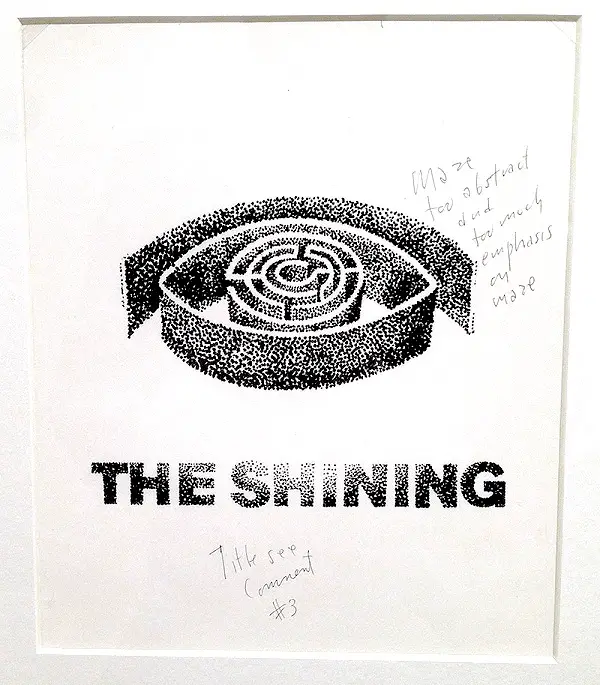
The labyrinth and the Minotaur
Right from the first descriptions that King offers readers, and that Kubrick translates very well into the film through the camera that follows the characters, the hotel in which the story takes place, in an almost obsessive way, the Overlook Hotel, appears "strange and impressive", as the back cover of the translation published by Bompiani defines it (much more widespread than the previous Sonzogno edition, the first in Italy, which had published it under the title A splendid death party).
The plumbing is accessible by going through "a long rectangular shaft that seemed to stretch for miles" (chapter 3), like many perspectives of the interior of the building in the film. The kitchen (chapter 10) is "immense ... It was something more than enormous: it was intimidating"; the smallest of its stoves has "an infinite number of dials and thermostats", a feature that suggests an engine room on the type of Metropolis - the famous 1926 film by Fritz Lang, based on the story of his wife Thea von Harbou - or in the control room of an ocean liner. The most famous, the Titanic, as the Overlook hosted celebrations and dances, up to the historic accident, which took place on April 12; in Shining, Titanic it is remembered precisely in chapter 12, where Jack Torrance compares it to the Overlook elevator, considered very safe by director Stuart Ullman even after more than fifty years from its installation.
The kitchen cabinets contain "such quantities of food as Wendy has never seen in her life." Of these more than abundant stocks, both in King and in Kubrick the cook Dick Hallorann makes a long and redundant list, both grotesque and disturbing, which can suggest a classic theme: the gargantuan dinner of the freedman Trimalcione in Satyricon by Petronius (paragraphs 31, 33, 36, 40, 47, 49, 60, 65, 69-70), a famous novel of the first century that has come to us mutilated. In Shining, however, those who are "eaten" are Jack Torrance, his wife Wendy and their son Danny: "It was as if the Overlook had swallowed them" (chapter 11).

Similarly to the villa in Trimalcione, the Overlook Hotel is also a labyrinthine environment: it has innumerable "corridors that deviated and intersected like a labyrinth" (chap. 12); the Torrances "swallowed up" by the hotel, with the deterioration of relations between Jack on the one hand and his wife and son on the other, develop an anguish that can be expressed with the same question of the three protagonists of the Satyricon, left the villa but lost in the alleys of the city: "What do we miserable people do, locked up in this new kind of labyrinth?" (quid faciamus, homines miserrimi, ex novi generis labyrintho included?, 73, 1). The real labyrinth is present both in the novel, where it is part of the playground for children, and in the film, in which it is the main room of the garden, has walls made up of high hedges and is also reproduced in a model in the lobby of the hotel. When the Overlook closes for autumn-winter (chapter 13), a long period of isolation begins for the Torrances, and this
"Communicated to Jack a curious feeling of shrinking, as if his vital energies were reduced to a faint spark, as if the dimensions of the hotel and the surrounding land had suddenly doubled and turned sinister, turning them into dwarfs, with a gloomy, inanimate power. "
After pausing to read a newspaper clippings album on the dark and bloody history of the Overlook, found in the cellars of the hotel while carrying out his duties as winter caretaker (chapter 18),
« suddenly Jack felt that the full weight of the Overlook was on him, with its one hundred and ten rooms, its warehouses, its kitchen, its pantry, its cold room, its lounge, its ballroom, its dining room ... "
Finally, almost halfway through the novel, the Torrances inside the hotel are compared to "Three microbes trapped in the intestine of a monster" (chap. 24). By the end of chapter 11 they had been "swallowed up" by the building-monster; now, after some time, the "human morsels" have been "digested".
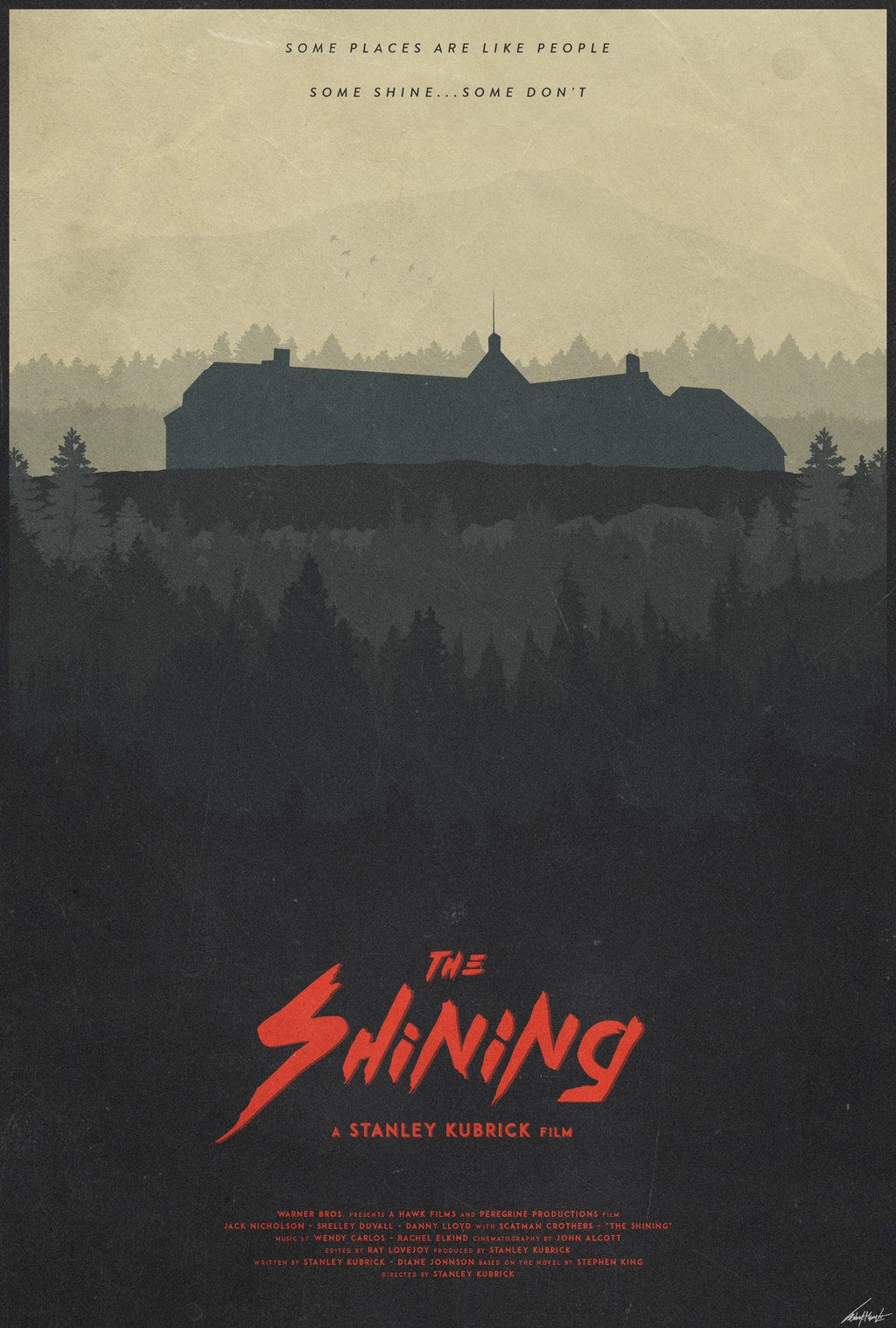
In some mythological-religious expressions there are quite explicit links between labyrinth, intestine, monsters and death, based on the twisted conformation that characterizes the intestine and the labyrinth. For example, in some Hindu temples there are wall reliefs with the god Shiva who "thrust a long spear into the throat of a small, tangled-limbed being: Yama, the Lord of Death. In Yama's hand still hangs the net that surrounds the hoof and fastens an imploring child " [1].
The tangle is a set of twisted curves; the network is a structure of crossed lines: united they form the labyrinth. This is usually placed on a plane, but if it extends also in depth, it becomes a network of caves and tunnels, the "bowels of the earth": an expression which preserves the analogy of the intestines with the underground cavities, and therefore with the "dwelling" of the dead [2]:
«The labyrinth, with its tortuous turns, with its meanders from which there is no way out, represents first and foremost the Kingdom of Death. […] If it is correct that the labyrinth was a reproduction of the viscera terrae and therefore also of the kingdom of the dead, this relationship with a cult of the dead should be the original one. "
Another civilization explicitly refers to the intestines - very far from the Greco-Roman one - which symbolically unites the tangle / labyrinth and death: a myth of Incas would allow us to understand that they they imagined the souls of the wicked condemned to the underworld, ukhu pacha, that is "the terrestrial intestines, where they will suffer the torments of cold and hunger" [3]. Also [4]
«In some cases the demons are represented in an abstract and stylized way in the form of a spiral or a labyrinth, whose meanders end in the center in a skeletal face with exaggerated eyes. Similar monsters are also known in Greek mythology, and undoubtedly the legend of the Minotaur also originates in them. Some of these beings are part of the labyrinth, as if the meanders were the arms and legs of the demon. Similar figures are also common in the rock art of southern Scandinavia, and form one of the main subjects of the megalithic art of Brittany and Ireland ...
The labyrinth and the tangle obviously also make us think of myth of the Minotaur and the ball of Ariadne. Some authors note that in German, in addition to the term cultured Labyrinth, there are two others indicating the same structure: wrong way e Maze, where the root irre, "To err, to be mistaken, to deceive oneself" also means "Crazy, man whose spirit has fallen into confusion, who has been lost forever" [5]. It is almost a description of Jack Torrance, who after having lost himself in the "labyrinth" of his own mind to the point of wanting to kill and dismember his wife and child, in the film dies right in the labyrinth of the garden (Maze), exhausted by Danny's mad pursuit and overcome by the cold. Like the Minotaur, he enters the labyrinth and never leaves it again.
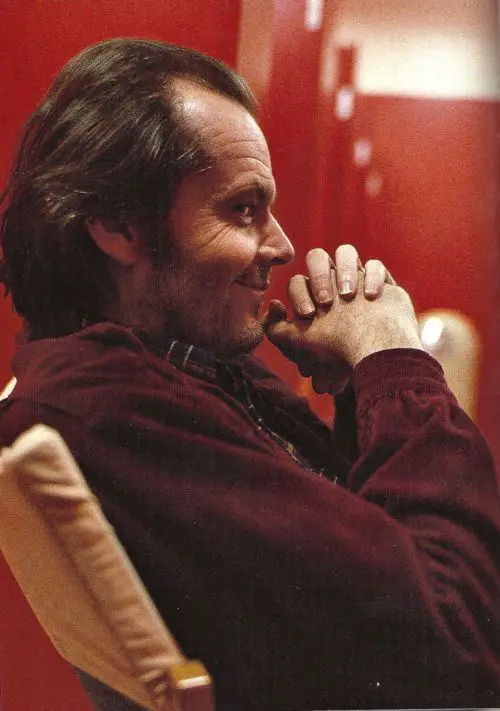
The red color
Red has always been a symbol of anger and blood, as well as of amorous passion, two realities that are not rarely connected to each other; in some pre-Christian religious rites it was with a blood sacrifice that one wanted to appease the wrath of the gods or feed them. In Shining red appears not infrequently. Such is the blood of the characters, both wounded (Jack and Wendy) and killed among the unsavory guests of the hotel in the previous decades. Red is Jack's Beetle (chapters 2 and 4), which in the film was "painted" yellow by Kubrick, perhaps for cryptic reasons (in The Shining Code it is said that yellow refers to the Sun and therefore to the god Apollo, whose name was given to the vehicle sent to the Moon); red is the ball with which Danny plays (ch. 39), like the one with which the dog and the children in the illustrated book he reads play (ch. 16); red are the squares, alternating with the black ones, of Jack's checkered shirt (ch. 50).
While Danny handles a red object (the ball), his father, on the contrary, is in the red objects - the shirt, the car - which may allude to his condition as a prisoner of his own temper. It is popularly said "to see red with anger", and Jack - we are told - "had seen red" when, in the short time he was a teacher, the student George Hatfield had cut his car tires (chapter 14). ). Red is the marking of the boiler tubes of the central body of the Overlook, while those of the east wing are indicated by the blue label and those of the west wing with the yellow one (chap. 3). They are the three primary colors. If you try to compare their location with the position of the Sun with respect to the cardinal points mentioned, an inversion emerges. Schematically, yellow is the color of sunlight, and blue that of the night sky: the yellow-solar should therefore be linked to the east where the Sun rises, instead it indicates the west, where it sets; the opposite is true for the blue-night sky.
At the center there is red, the color of anger. All this may suggest that anger, when it occupies the "center" of a person, leads him to a disordered interaction with the world, and this situation is precisely what Jack is the protagonist of. The boiler itself to be controlled is an objective correlative of the character. Jack is unable to regulate his "boiler", that is, his buildup of resentment, although he always believes he can fully return to "not losing your temper": in chapter 21 we are told that Wendy, his wife,
“She had the feeling that Jack was getting more and more angry with her or Danny, but he refused to show it. There boiler was equipped with a device to lower the pressure: old, run down, encrusted with grease, but still functioning. Jack didn't. "
The English word RED (red) is also the beginning of the mysterious word RED RUM, which haunts Danny in his nightmares and his gifted mind shine (translated as "aura" in the novel, with "glitter" in the film), that is, of telepathic faculties, of clairvoyance of the past and of precognition, until the child understands that it is a matter of MURDER (murder) written from right to left. In Kubrick's film, but not in the novel, Danny writes it on a door with the color red, which obviously alludes to blood.
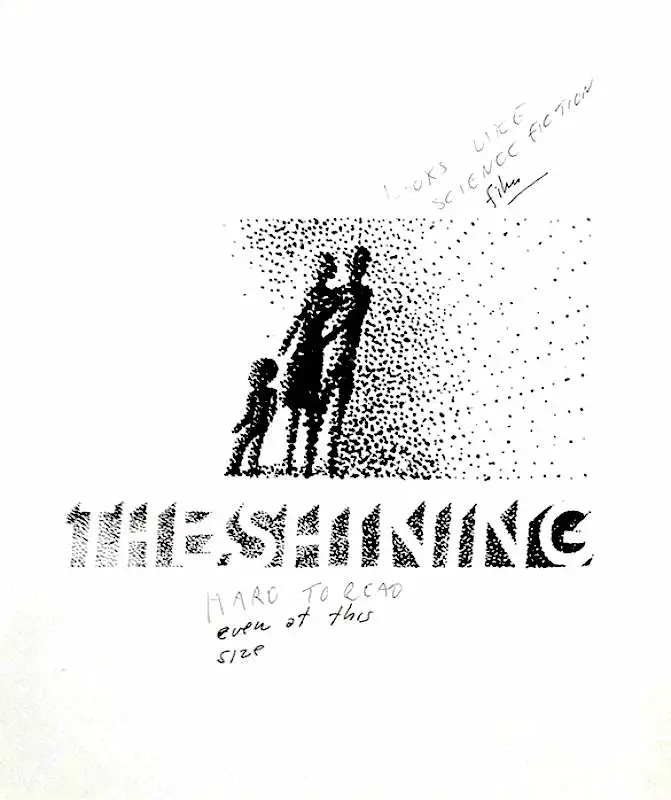
The three Moiras and the cancellation of time
On the closing day of the Overlook, Wendy Torrance sees in the atrium, among the last guests about to leave, three nuns of which he notes the "accord of tinkling girlish laughter", despite their advanced age (chapter 9). They have no role in the story, yet they are present and will be mentioned in four other chapters: 10 (where it is said that they are gone), 35 (in which Wendy remembers seeing and hearing them on the closing day, done which now, after weeks of distressing events, seems to have happened to her "a thousand, a hundred thousand years earlier"), on 43 (where Jack notices them among the many guests of the ballroom who have re-emerged from past eras) and on 57 (where they are remembered virtually by chance by the narrator).
By contrast, while the Torrances are the only tenants of the hotel, one day a trio totally different from the three nuns comes to life. Among the garden hedges, artistically cut into animal shapes (a bison, a dog, a horse, a rabbit, three lions and a cow), they are the most aggressive to move threateningly: the three lions. Jack, who is in the garden to prune them, sees them advance slowly, is terrified and afraid of going mad, but at the same time violently refuses to believe them (chapter 23).
The three women, as similar to each other, can make us think of the Three Graces, that is, of harmony - absent this one, its opposites emerge: disagreement, destructiveness ... - but also at Tre Moire, or Fates, from Greek mythology and poetry: Clotho, Lachesis and Atropos, who wove and, at the moment decided by Fate, cut the thread of human life. In chapter 13, the closing season of the hotel is symbolized by a "tightly wrapped ball", an element already encountered in the myth of Ariadne's thread and the labyrinth. Furthermore, the three nuns sat by the fire in the fireplace, which goes out just after their departure (chap. 10); in this aspect, they make us think of tutelary figures of the hearth, therefore of the house: leaving it, they abandon it to evil energies. This recalls the role of the Vestals of the ancient religion Roman, the priestesses of the goddess Vesta (called Hestia in Greece), consecrated to the custody of the sacred fire, which it was their duty to keep alight and of which the hearth of the house was the image and extension: "The domestic fire [...] symbolized in all times the unity of the family " [6], precisely the human dimension that among the Torrances is seriously damaged.
 Read in retrospect, the absence of the three nuns / Moires from the Overlook leads us to think that Jack, Wendy and Danny are destined to die: the three Moiras mean cut thread; the thread is what makes up the ball; the wound ball suggests the end (winding concluded) but also the beginning (ball to unravel). This chain of metaphors agrees with Kubrick's choice to open the film with the titles scrolling upwards (rewinding movement) as if they were the end credits, and accompanied by the funeral march of the Dies Irae by the nineteenth-century composer Héctor Berlioz, which will never be repeated during the film and being a funeral music should be placed at the end of a human story, not at the beginning.
Read in retrospect, the absence of the three nuns / Moires from the Overlook leads us to think that Jack, Wendy and Danny are destined to die: the three Moiras mean cut thread; the thread is what makes up the ball; the wound ball suggests the end (winding concluded) but also the beginning (ball to unravel). This chain of metaphors agrees with Kubrick's choice to open the film with the titles scrolling upwards (rewinding movement) as if they were the end credits, and accompanied by the funeral march of the Dies Irae by the nineteenth-century composer Héctor Berlioz, which will never be repeated during the film and being a funeral music should be placed at the end of a human story, not at the beginning.
Furthermore, if the three nuns / Moire symbolize the beginning, the development and the conclusion of human life, their departure suggests that the Torrances will be estranged from the course of time: in the novel it will in fact be said that “Things continued to exist at the Overlook. At the Overlook there was a unique and indivisible time " (chapter 37), "It was as if another Overlook was hiding under the visible one, separated from the real world" (chap. 43), "Time no longer existed", "time had been canceled", "all times have merged into one time» (chapter 44).
In fact, in the Overlook Hotel a re-emergence of the events and people of the past takes place, an intertwining between the past epochs and the present epoch; in this aspect, the hotel - whose name means precisely "View beyond", "view above", not only for its location in the high mountains which allows a very wide panoramic view, but also as a synonym of clairvoyance and precognition - is a sort of portal on that metaphysical dimension, postulated by some occultists and parapsychologists, called cosmic consciousness, who are "in the meaning of persistent presence of memories of everything that happened before, [which] would tend to explain the memory of certain individuals, often in a state of hypnosis but not always, of details on past lives (which have often been historically correct, when news previously ignored on the period of time in question were discovered) often attributed to the reincarnation of souls " [7].
This ultra-sensitive dimension - which according to some paranormal experiences would undoubtedly exist - is also called "Akashic memory" [8] or, in the words of the famous psychologist William James (1842-1910), "Cosmic reservoir of individual memories": an immeasurable "archive" of traces of events, experiences and human affections "which by the very fact of having existed, still exist and will always exist" [9] and therefore they are always reproducible. In the work Geometry of reality and the non-existence of death, the orientalist Pietro Silvio Rivetta (1886-1952), known under the pseudonym Toddi, wrote about it: «Everything that has happened really exists, that is è, and only the limitations of the senses prevent us from having actual awareness of this persistent reality. [...] Except the present, which carries us with it in its becoming, nothing flows or flows, because everything remains "[10].
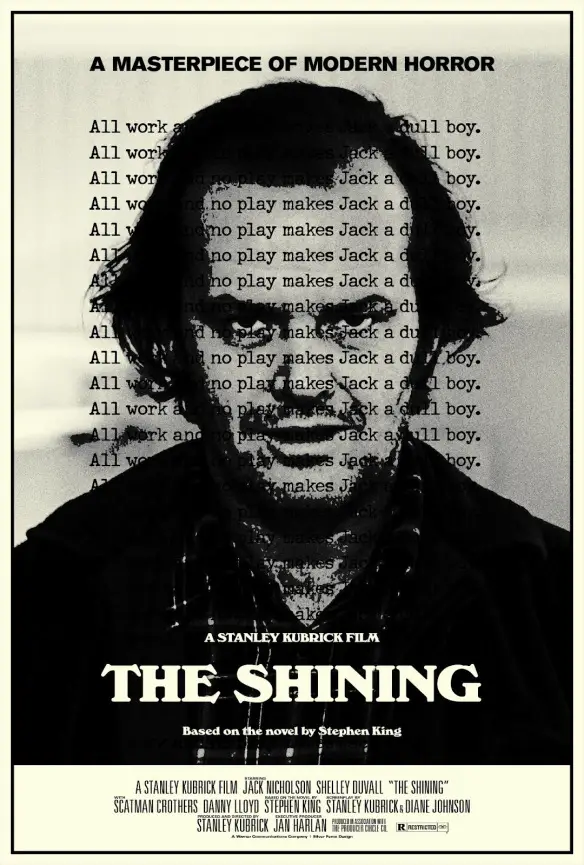
The well-known Turin antiquarian and painter Gustavo Adolfo Rol, "Enlightened spiritual master" [11] endowed with metapsychic faculties some of which are similar to those of Danny Torrance, he expressed himself in similar words: «Nothing is destroyed, but everything accumulates; everything remains operative, God and his thoughts being the same thing, and we are part of God " [12]. These conceptions are well reflected in the words of the cook Dick Hallorann, who in chapter 11 says to little Danny:
“It seems that of all the bad things that have happened here on various occasions, a few bits and pieces have remained around, like nail clippings. "
and in those of Jack, who in chapter 32, citing a British author of horror relatively well known, he attempts to explain to Wendy that the strange presences that seem to threaten them can be "Ghosts", but
'Not in Algernon Blackwood's sense, that's for sure. If anything, something similar to the remnants of the feelings of the people who have stayed here. Good things and bad things. In this sense, every hotel is likely to have its own ghosts. Especially the old hotels. "
With the departure of the three nuns / Moire from the Overlook, therefore, time becomes absent. The three "holy women" were in the hall like the Torrances, but only Wendy had noticed them, not Jack: they didn't see him and he didn't see them. From the very beginning, in fact, Jack is the most predisposed to temporal alienation: along the story he is psychologically more and more absent from the present, but more and more present in the past: both his own and that of the Overlook, as if he were a prisoner of both.. Jack tends to remain absorbed in his own memories, brooding, letting himself be dominated by his own experiences and resentments, even while carrying out tasks that require attention, such as the disinfestation of wasps (chap. 14), the pruning of carved hedges (chap. 23) or boiler maintenance, whose pressure he forgets to regulate for almost 12 hours (chap. 40).

His mental absences, his literary ambitions and his "grudges of all kinds" (chapter 1) are what the "personality" of the hotel, steeped in memories of violence and corruption, uses to absorb him progressively into history of the building. At the end of the story, in Kubrick's version what remains of Jack Torrance is only the body, a shell devoid of mind and soul, frozen in the labyrinth of the garden. The film's alienating ending - the incomprehensible presence of Jack in the photograph of the dance dated 1921, impossible to explain with the habitual and conventional concept of time - tells us that the keeper has been permanently absorbed by the Overlook, becoming a character from the past of the hotel like its predecessor Delbert Grady, who - before committing suicide - massacred his wife and their two children. In the novel, these are not twins like in the film: one was 8 years old and the other 6, says the technician Watson (chapter 3), absent in the film due to his comic vulgarity, alien to the atmosphere of psychological tension and looming horror privileged by Kubrick.
In fact, Jack often appears to his wife as "an introverted man, even hermetic, and when he lost control, Wendy was always frightened as if it were the first time" (chapter 27); the resentment he hides within him leads him to be extremely tense in retaliation - wanting to get compensation for Danny's wasp stings, instead of rushing to look for medicines he fetches the Polaroid to photograph the stings on the child's arm and sue the manufacturers of the insecticide spray, which evidently did not work (chapter 16) - but also unconsciously self-destructive: it tears and throws away in the snow the magnet necessary for the snowmobile's motor, with which the family could have moved away from the Overlook in emergencies (chap. 33). A gesture determined by a latent desire for suicide, but also fueled by the malignant forces of the hotel: just before carrying it out, Jack realizes that
« it wasn't just Danny that the Overlook was acting nefariously. She also acted on him. Danny wasn't the weakest link in the chain: it was him. He was the vulnerable one, the one who could be bent and twisted until something broke. »
In this light, the cutting of the symbolic thread of the Moire (in the guise of the three nuns who leave the Overlook) also refers to cutting, to "cutting the situation". This ties in well with the leitmotiv of the whole novel - death - and it is also present in the intention that Jack has within himself: to get it over with, with himself (that is, to commit suicide) because he considers himself a failure, and with the family, eliminating his wife and son who are experienced as obstacles to his vocation as a writer and his duty as guardian of a building full of history.

Presences of the past (literary and otherwise)
Even in tragedy Macbeth William Shakespeare's three "sisters" - the Weird Sisters, Three Fatal Sisters or Three Witches - and a group of "walking shrubs" almost like the hedge animals in the Overlook garden: those with whom - it will be discovered - the English soldiers cover themselves as they advance towards the Scottish fortress of Macbeth (act V, scene 5a). The three nuns of Shining they appear for the first time in chapter 9 of the novel: 9 is the product of 3 x 3, that is, of the number of nuns multiplied by itself. In the Macbeth, the Three Fatal Sisters - "consecrated" to magic, in their case - utter a magic formula that includes the phrase: «Three to me, three to you, and to make nine three more!»(Act I, scene 3a); so the sum of this addition coincides with the chapter number of Shining in which the three nuns appear for the first time.
In chapter 43 it is Jack who sees them, but it is not a memory of him (he did not see them on the closing day), but one of the many presences of the past that re-emerges and intertwines with the present, or it is their ghosts, which would mean they died together in the weeks between their departure from the Overlook and the night Jack sees them. In his vision, or perception, of the overcrowded ballroom, "all hotel eras were mixed"; he finds himself in fact among groups of guests who lived - as he recognizes from the clothes and hairstyles - throughout the twentieth century, from the 10s onwards. However, even now, Jack sees the three nuns without being seen by them.
Among the sources of inspiration for Shining there was no doubt The Mask of the Red Death by Edgar Allan Poe, mentioned in the quotation at the beginning of the novel and also later (chapters 18, 37 and 44); but it is very likely that King wanted to encrypt in the three nuns a homage to Shakespeare, who in some of his tragedies included the themes - also dear to Poe - of the assassination (murder), of the ghost and madness. The "Bard" is mentioned in the novel: during his stay in the Overlook Hotel, Jack devotes himself to writing a play / play, which he never manages to finish (in Kubrick's film, the comedy is replaced by a novel that never proceeds); for this reason Wendy, in chapter 15, jokingly calls her husband "the American Shakespeare".
In an English horror-crime novel Wilkie collins (1824-1889) entitled precisely The haunted hotel, another possible source of inspiration for King, a similar thing happens: one of the Westwick brothers has the idea of writing a drama (titled like the novel) based on news of strange deaths and paranormal phenomena that would have occurred in the Palace Hotel of Venice, where she is going, and suggests it to the disturbing Countess Narona, who sketches a work whose characters correspond to her and her roommates and with which she summarizes the events that took place in the hotel, revealing some crimes from you met [13].
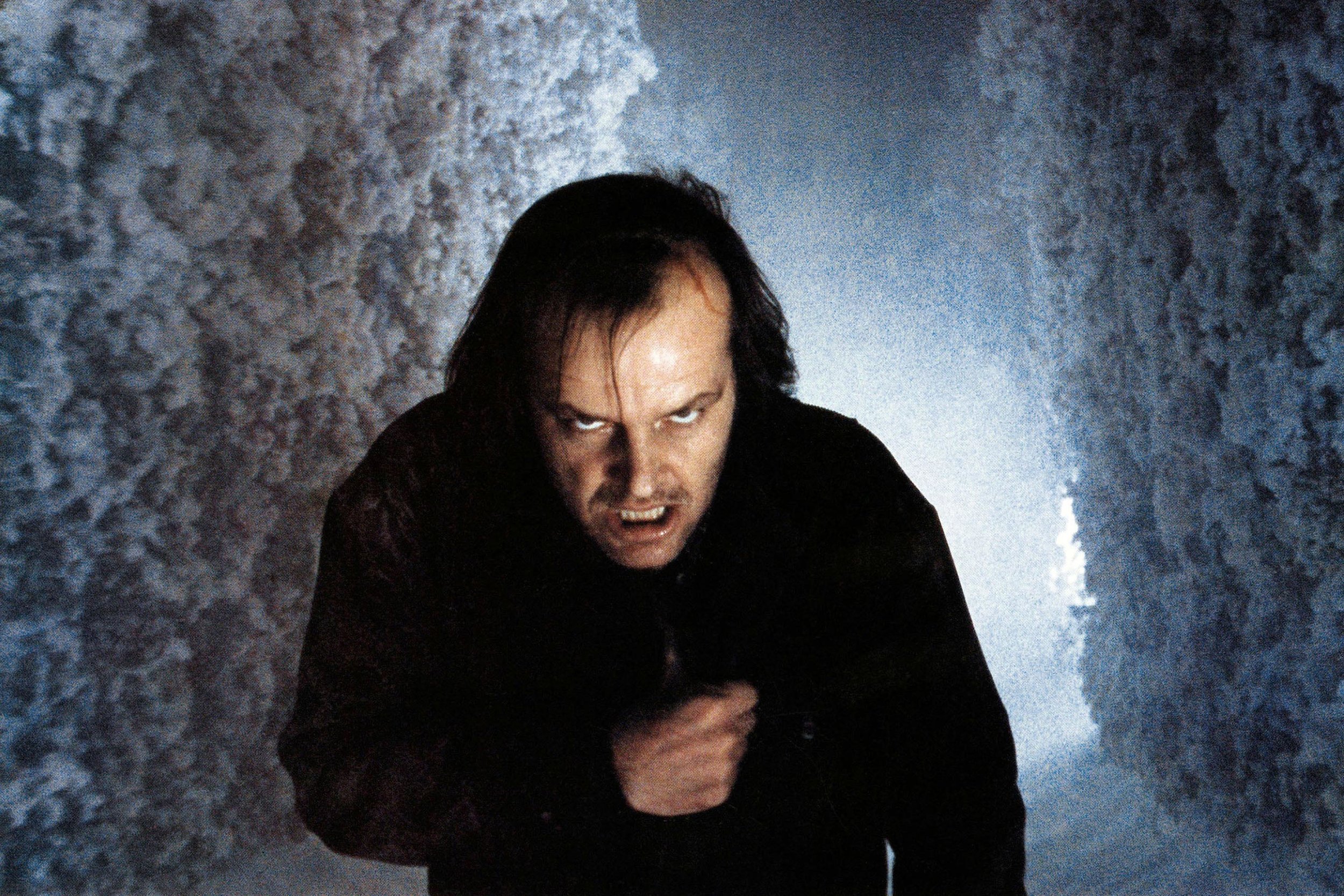
King probably also drew on another famous British author: Oscar Wilde. It was seen that, in chapter 32, Jack mentions the writer Algernon Blackwood; in Wilde's famous comedy The importance of being Earnest (The Importance of Being Earnest, 1894) one of the characters is precisely called Algernon, and above all, one of the protagonists, Gwendolen, digressing on the musicality of male names says: “There is very little music in the name Jack. Indeed, there is none. It doesn't give the slightest thrill. It does not produce the smallest vibration " [14]. Jack is also Torrance's name, and in chapter 29 of Shining Danny says of his father: "He does not radiate". Stephen King may have here transposed the meaning of the musical "vibration" of which Wilde spoke, in another context, the metaphysical-occult one: Jack is not very radiant or "shimmering" (shining) under the psychological-spiritual aspect, that is, he does not have the paranormal faculties of his son Danny, or rather he has them much less developed and above all not in the same way.
In fact, Jack has some visions, which however are not always experiences of clairvoyance. At least one of them - narrated in chap. 32 - is certainly produced by a very strong sense of guilt repressed: the one in which the student Hatfield - whom Jack had beaten to death, discovering him intent on cutting the tires of his Beetle - with a knife stuck in his chest emerges from the tub in apartment 217, which in the film becomes 237. Here from the tub emerges only Mrs. Massey, the living dead, who in the novel, however, is seen only by Danny, who - as in the film - escapes his attempted strangulation (chapters 25-29 ).
The vision in which the animals of the hedge come alive, on the other hand, could be confused with the hallucination of a mind on the verge of madness, but then we read that even Danny sees them move, he risks being attacked by them (chapter 34), and soon after - being able to read the minds of others - he knows that his father too has really seen the three lions come to life, but he keeps it hidden from his mother and from him (chap. 35). Finally, the animals of the hedge will also try to attack Hallorann when, telepathically sensing Danny's request for help, he returns from Florida to the Overlook to save him and Wendy from Jack's madness (chapters 51 and 53).
Jack's clairvoyance experiences can be said to be "one-sided" due to his selfish personality. Among all the people and situations that re-emerge from the past, he sees and interacts only with those through which he can vent his grudges and escape the sense of failure: not surprisingly, in the vision / perception of the crowded hall, he finds himself dancing with a charming stranger, talks with the barman Lloyd who awakens alcoholism in him, runs into Grady, who has torn his wife and daughters to pieces and who convinces him to emulate him. Jack "does not radiate", that is, he has one shine not empathetic, but distorted: does not understand the dangers or the need for help in others, as happens instead to Danny, to Hallorann and to a lesser extent also to Wendy.
In fact, in the Overlook there is also a disconcerting materialization of objects that Wendy witnesses: at midnight - the time when a sumptuous masked ball took place back in 1945 - the elevator starts automatically, and the woman not only hears ( like Danny) the music and voices of the occupants (invisible), but sees in the cabin, and can pick up confetti, streamers and a black silk mask with silver glitter worn by who knows who. Everything is almost slammed in the face of Jack, who insists on denying the paranormal nature of the phenomena he encounters and "solves" the inexplicable movement of the lift with the simple possibility of a short circuit (chap. 36).
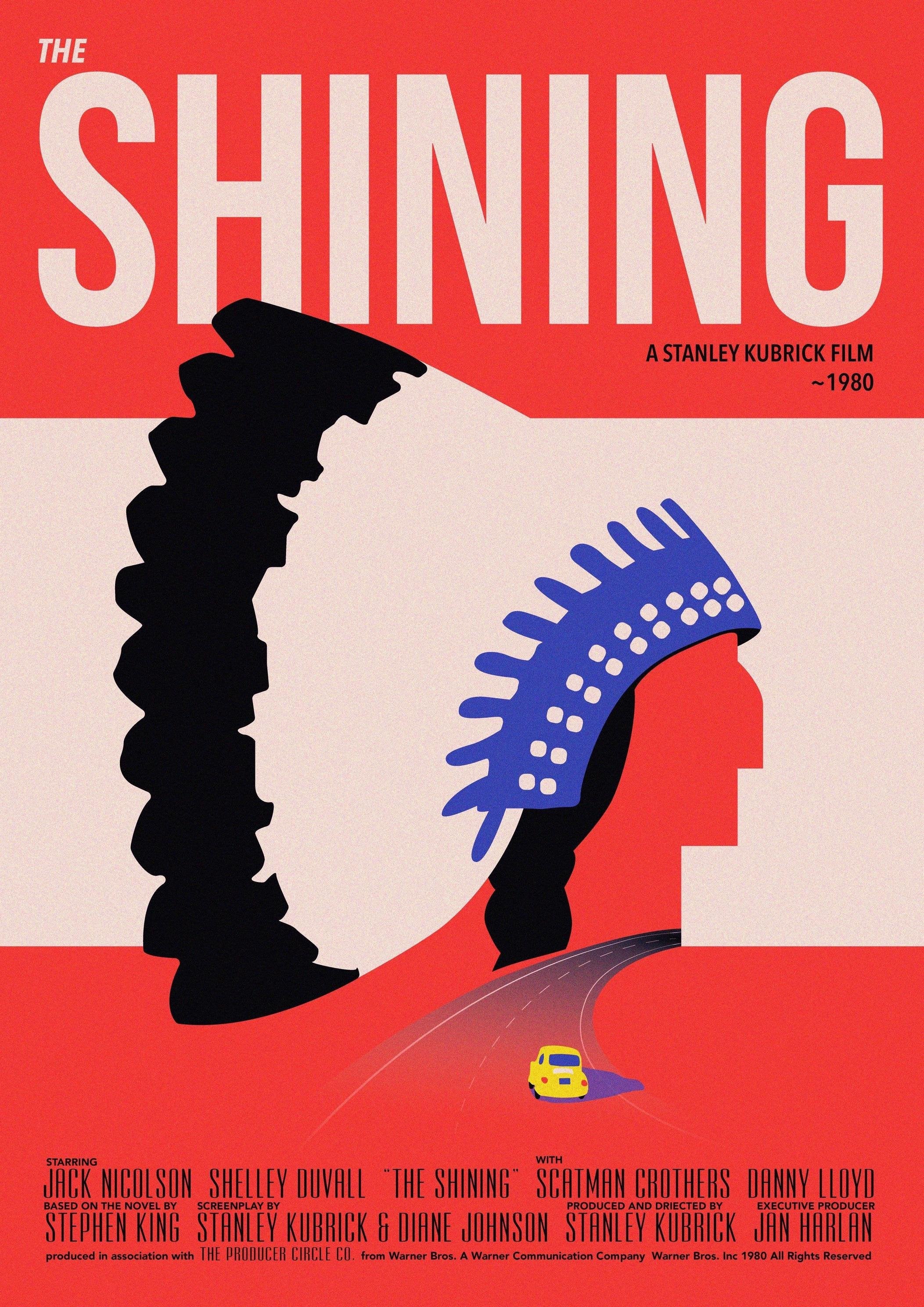
A microcosm of national history
Through one of the first dialogues in the film, Kubrick presents the Overlook Hotel like built over an ancient Indian cemetery. The history of the last three centuries allows us to say that a large part ofwhole area North American sito an immense cemetery in Pellerossa: this is a first element through which the hotel can appear a three-dimensional allegory of all the operations, ambiguous or cynically marked by "reason of state", carried out by some structures of power, financial, political or US military-strategic. This idea is also present between the lines in the novel. In chapter 1, describing the floor plan and the premises of the hotel to Jack, the manager Ullman makes a statement that can be suggestive:
“The Overlook has changed owners several times since the end of World War II, and apparently the various managers who have succeeded each other have thrown everything that was not to their taste in the attic. "
If the Overlook "is" the United States, Ullman's words become legible like this: the United States has changed government several times since the end of World War II, and the various presidents who have succeeded one another have concealed everything that would have been compromising for the establishment. This possibility, foreseen or not by King, can be reflected in the appearance given by Kubrick to "his" Ullman, different from that of the novel: it is similar to the caricature of a President (perhaps John F. Kennedy?), With a red striped shirt and white, national flag on the desk and a statuette in the form of an eagle - symbol of the States - on the windowsill behind him.
In chapter 12 it says that the walls of the Overlook Presidential Apartment - which is no. 300: the same number, roughly, from the years of US history from colonization to then - have red and white striped upholstery, like the national flag; and on this wallpaper the little Danny, thanks to his shine, see
« large stains of coagulated blood, dotted with a grayish-white matter, like a hallucinated and grotesque illustration drawn in blood, a surrealist etching depicting the face of a man terrified by terror and pain, open mouth and half of the head pulverized »
Ne The haunted hotel of Collins - written in the height of curiosity towards spiritualism and occultism especially in the theosophical version, despite the contemporary scientific positivism - a similar fact occurs: Marian, one of the girls staying in the Hotel Palace in Venice, looking at the ceiling above his bed "alarmed Agnes by leaping to her feet with a scream of terror and pointing to a small brown spot on one of the white plaster squares between the ceiling carvings. “It's a bloodstain!” Exclaimed the little girl. "Take me away! I don't want to sleep here! "" [15].
This stain "was so small that it was barely visible, and in all likelihood it was attributable to the neglect of a worker or to the ooze of a drop of water accidentally spilled on the floor upstairs" [16]; but in the very same room Agnes, cousin of the Westwick brothers, will see that same night a ghost man's head floating in the dark, above the Countess Narona, a few days before the head of a dismembered corpse is actually discovered, hidden under a fireplace and identical to that of the nocturnal apparition.
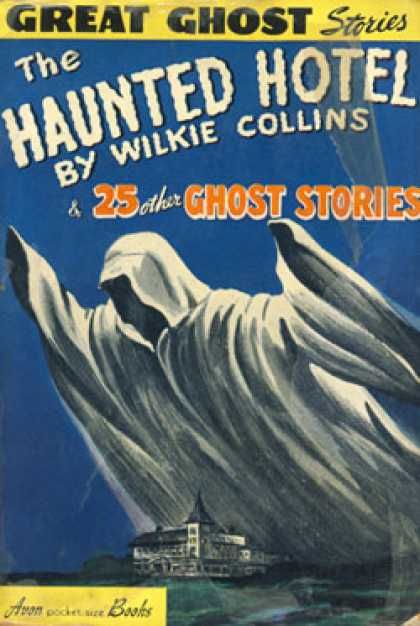
What Danny sees in his flashback metapsychic is the trace of a mafia murder that took place in the Presidential Apartment more than ten years earlier, but it is also a double precognition: it is a trace of what could happen to him in the following months, if he is reached by the murderous madness of his father possessed by the evil forces of the Overlook, and it is also a trace of the wounds that Jack, shortly before dying - in the hotel fire caused by the explosion of the boiler, not frozen in the labyrinth as in the film - will do to himself, hitting his head with the roque club (chapter 55):
“His hands closed again on the club, but instead of aiming at Danny, he turned the handle, aiming the weapon overhead. [...] Then the club dropped, destroying what remained of Jack Torrance's image […] With repeated dull blows. Splashes of blood spread across the upholstery. Minute fragments of bone shot into the air ... "
In the hotel, allegorical geometry of the United States, the stain of blood and brain matter can therefore allude to the moral stains of the country's ruling class, that is, its declared or hidden strategic-military initiatives.: the almost total extermination of the Red Indians, the peculiar ultimatum given to Japan in the late nineteenth century by Admiral Perry (or open ports to the US market or suffer the shelling of the imperial fleet), the assassination of John F. Kennedy, the assassination of Martin Luther King, the soldiers sent to die in the the Vietnam War, the fake Cuban Bay of Pigs attack in the 60s, the CIA's experimental tests on humans in Operation MK Ultra. At the end of chapter 42, Hallorann is in the plane she is leaving Florida on to return to Colorado to rescue Danny, and her neighbor, conversing with him, says among other things:
«It is always the poor soldier who in the end pays for every intervention abroad. [...] This country has to stop it with its dirty guerricciole. Behind every dirty little war America has fought this century has always been the CIA. The CIA and dollar diplomacy. »
According to supporters of the "esoteric Kubrick", in the film all this would be symbolized in the terrifying waves of blood that flood the corridor seen by Danny.
While at the doctor's with Wendy, the child remotely "sees" his father immersed in reading the album of articles on the crimes that took place in the hotel found in the cellar (chapters 17-18), and telepathically he "hears" him repeating "without pause the same incomprehensible thing ": «This inhumane place creates human monsters». The keeper-executioner Grady, a disguised senator who died in an erotic encounter, the mafioso Vittorio Gianelli known as "the Butcher" ... "This inhuman place creates human monsters. What did that mean? " Danny asks anxiously later, in Chapter 21. Here, on the phone with his friend and co-owner of the Overlook Albert Shockley, Jack provides the answer, which is also a key to understanding both of King's and Kubrick's masterpieces. : "It seems to me that this place is like an index of all the American characters of the post-war period".
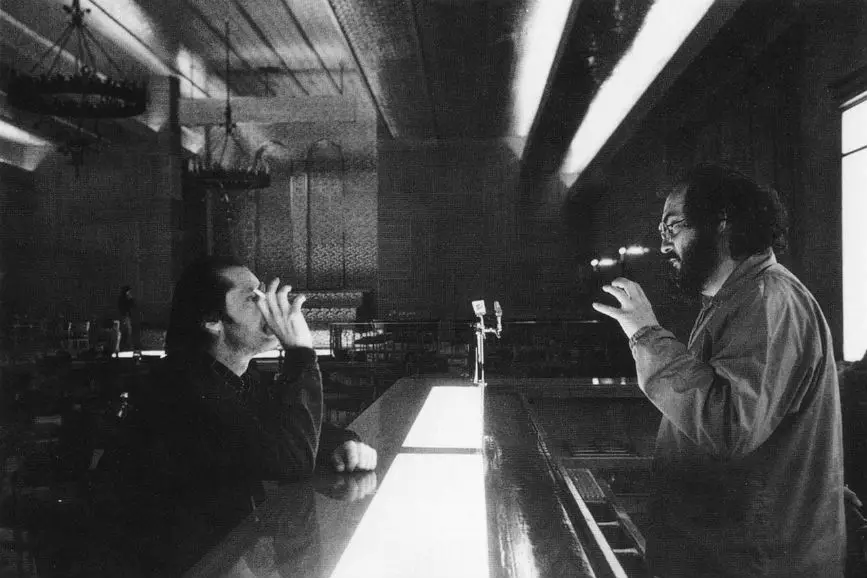
Note:
[1] Giovanni Giuseppe Lanza del Vasto, Pilgrimage to the Springs. The meeting with Gandhi and with India, Milan, Jaca Book, 1978, p. 37.
[2] Jean de Vries, quoted in Paolo Santarcangeli, The book of labyrinths. History of a myth and a symbol, sl, Frassinelli, 1984, pp. 123 and 155.
[3] W. Krickberg, H. Trimborn et al., Pre-Columbian American Religions, New York 1969, p. 131, cit. in William Sullivan, The mystery of the Incas, Casale Monferrato, Piemme, 2001, p. 444, note 23.
[4] Eugenio Turri, quoted in Santarcangeli, The book of labyrinths cit., p. 95.
[5] Santarcangelo, op. cit., p. 46.
[6] Maria Paoli, Myths and legends of the classical age, edited by Rosetta Zordan, Florence, Le Monnier-Salani narrative, p. 69. Another famous American author, Jack London, also alludes to the archetypal figure of the woman guardian of fire, indispensable to civilization. The Scarlet Plague (1912) inserting a character, Vesta van Warden (warden = guardian) a fallen noblewoman intent on setting a fire.
[7] Charles Berlitz, Bermuda. The triangle accursed, Milan, Sperling & Kupfer, 1974, pp. 169-170.
[8] Massimo Introvigne, interviewed by Nicolò Bongiorno for the docu-film Gustavo Rol: a world behind the world, Mike Criss Productions - Piedmont Region, 2007. Giuditta Dembech, in Rol, the great precursor, Turin, Ariete Multimedia, third ed. 2013, pp. 95 and 144, speaks of "Akashic annals".
[9] Leo Talamonti, Forbidden universe, Milan, Mondadori, 1966, pp. 125, 214, 218.
[10] Toddi (Pietro Silvio Rivetta), Geometry of reality and the non-existence of death, Rome, 1947, quoted in Talamonti, op. cit., pp. 63-64.
[11] Definition taken from the site www.gustavorol.org/ .
[12] Letter of 1 May 1951, cit. in Catterina Ferrari (edited by), “I am the gutter”. Letters, diaries, reflections by Gustavo Adolfo Rol, Florence, Giunti, 2000, p. 145.
[13] Wilkie Collins, The haunted hotel. A mystery of modern Venice [The Haunted Hotel: a mystery of modern Venice, 1878], trans. it. Milan, New Publishing Initiative spa, 2002, cap. 18 and following passim.
[14] Oscar Wilde, The importance of being honest, Milan, Mondadori, 1990, cit. in Vito Tartamella, In the surname of the Italian people. The influence of the family name in our mental, social and professional life, Monza, Viennepierre Editions, 1995, pp. 231-232.
[15] Collins, The haunted hotel cit., chap. 21.
[16] Ibidem.

2 comments on ““The Shining”: in the labyrinths of the psyche and time"